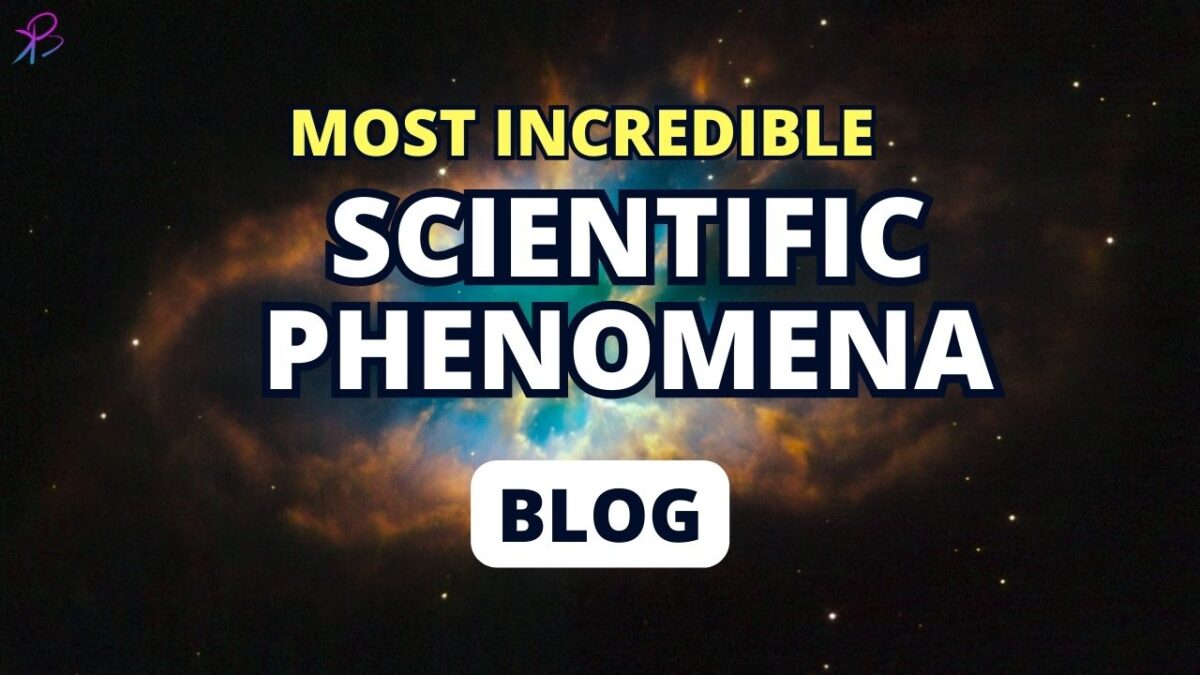Dive into the world of science as we unpack some of the most breathtaking phenomena. Learn about "The World's Most Incredible Scientific Phenomena Explained" in this detailed guide.
Introduction
Well, well, well. Here we are, about to embark on a remarkable journey exploring some of the most mind-blowing occurrences in the world. When you hear "scientific phenomena", what comes to mind? You might be thinking of something out of a sci-fi movie, but let me tell you, reality can be stranger than fiction. So, buckle up, my friend, because we're about to dive headfirst into The World's Most Incredible Scientific Phenomena Explained.
1. The Magic of Quantum Mechanics

Ain't quantum mechanics a piece of work? It's like the wild, wild west of physics, where particles can be in multiple places at once, and they can also be interconnected over huge distances!
1.1 Quantum Superposition and Entanglement

Superposition and entanglement are two prime examples of the outlandish nature of quantum mechanics. In the world of the teensy-weensy, particles can be in two states at once, thanks to superposition. Quantum entanglement, on the other hand, binds particles in such a way that the state of one instantaneously affects the other, no matter the distance. Einstein dubbed this "spooky action at a distance". And spooky, it sure is!
2. The Enigma of Dark Matter and Dark Energy
The universe, it's a pretty vast place, right? But did you know that the stuff we see only accounts for a measly 5% of the entire cosmos? Enter dark matter and dark energy.

2.1 Dark Matter
Dark matter is like the universe's best-kept secret. We know it's there due to its gravitational effects, but the dang thing refuses to interact with electromagnetic radiation, making it virtually invisible. Talk about playing hard to get!
2.2 Dark Energy
Dark energy is another cryptic player. It's responsible for the accelerated expansion of the universe. However, we're still scratching our heads over what it is exactly.
3. The Phenomenon of Black Holes
Black holes, oh boy! These are regions of space-time exhibiting gravitational forces so strong that nothing can escape from within them. Not even light. They're the ultimate cosmic vacuum cleaners.
3.1 Formation and Characteristics
Black holes are formed from the remnants of massive stars after a supernova explosion. They're characterized by an event horizon, a boundary beyond which escape is impossible. Inside a black hole is a singularity, a point of infinite density. Mind-boggling, isn't it?
4. The Mysteries of Bioluminescence

Bioluminescence is nature's version of a fireworks display. It's a biological phenomenon where living organisms emit light. So, how does Mother Nature pull off this magnificent light show?
4.1 Mechanism of Bioluminescence
Bioluminescence is a result of a chemical reaction involving a light-emitting molecule called luciferin and an enzyme, luciferase. Some creatures, like fireflies and certain species of deep-sea creatures, have mastered this spectacular trick.
5. The Miracle of Photosynthesis
Photosynthesis is the miraculous process by which plants convert light energy, usually from the sun, into chemical energy.
5.1 The Process of Photosynthesis
During photosynthesis, plants take in carbon dioxide and water, and under the influence of sunlight, they transform these into glucose and oxygen. Not only does this process feed the plant, but it also produces the oxygen that we all breathe. Quite the lifesaver, wouldn't you agree?
FAQs
Q: Can anything escape from a black hole? A: Nope, not even light can escape a black hole's gravitational pull.
Q: What are dark matter and dark energy made of? A: We're still not entirely sure. Their elusive nature makes them challenging to study.
Q: How do particles exist in multiple states at once in quantum mechanics? A: It's due to a phenomenon called quantum superposition, where particles can exist in multiple states until observed.
Q: How do organisms produce light in bioluminescence? A: They do this through a chemical reaction involving a molecule called luciferin and an enzyme, luciferase.
Q: Can plants perform photosynthesis without sunlight? A: While sunlight is the primary source, plants can also use artificial light for photosynthesis.
Q: What's the function of photosynthesis? A: It allows plants to convert light energy into chemical energy, which feeds the plant and produces oxygen.
Conclusion
Phew! We've traversed through the vast universe, plunged into the microscopic world, and dived into the deep sea—all in the quest of understanding The World's Most Incredible Scientific Phenomena. The journey might leave you in awe, bewilderment, or both, but isn't that the beauty of science? It tickles our curiosity and broadens our understanding of the world we inhabit.
Subscribe to newsletter
Follow us at our FREE youtube channel 👇
Check out all the resources by the author
Follow our Official Blog Website
Interested in Engineering Courses ? Global best selling courses !
a bkacademy initiative
-.-.-.-.-.-.-.-.-.().-.-.-.-.-.-.-.-.-
